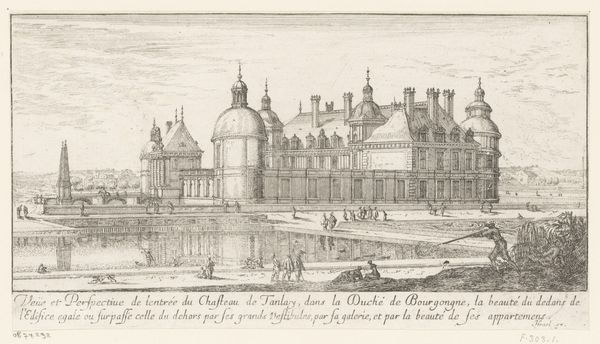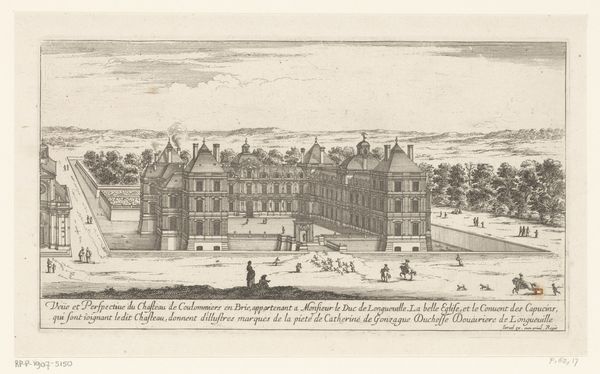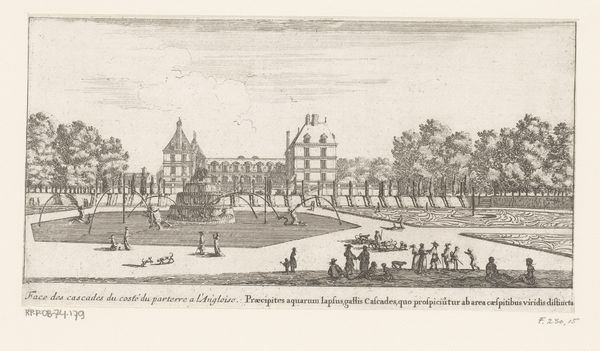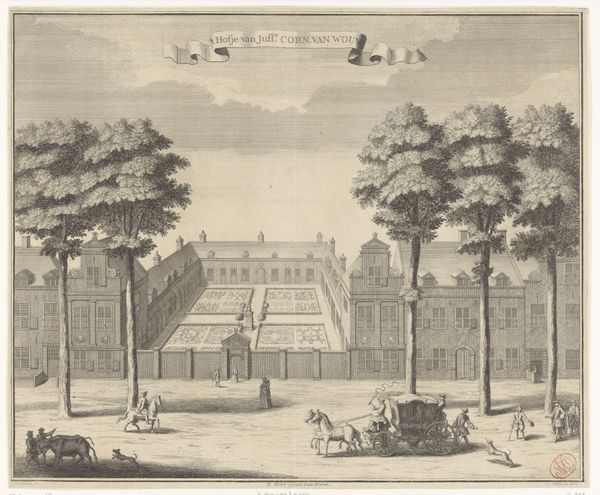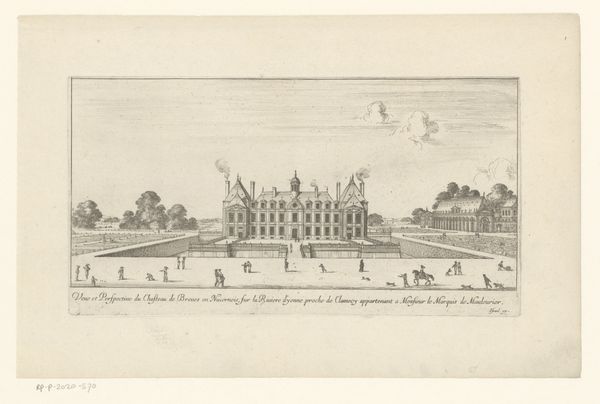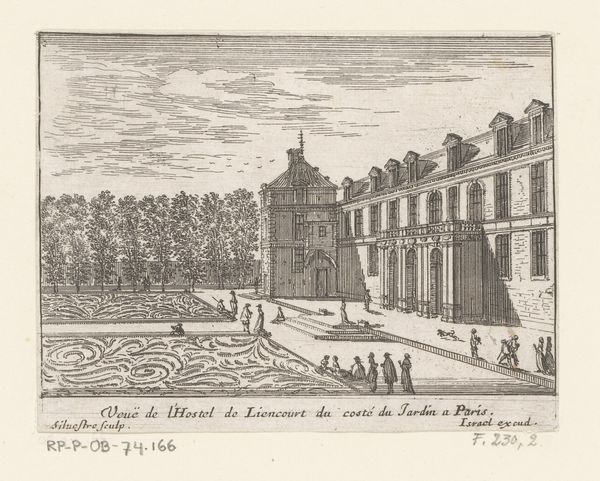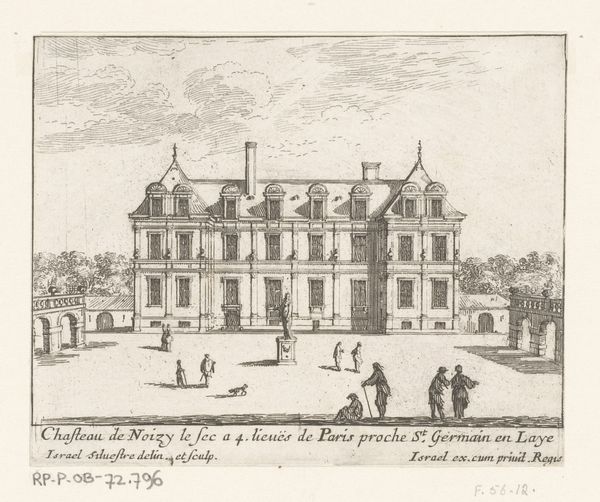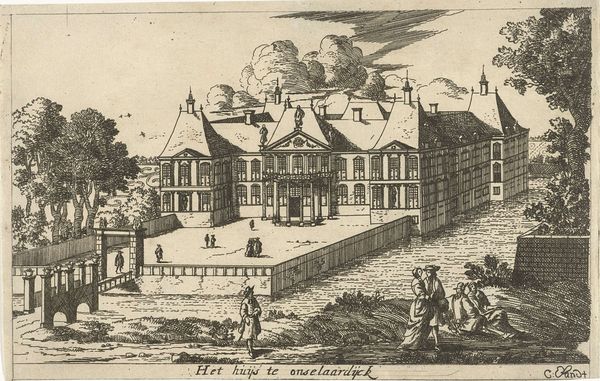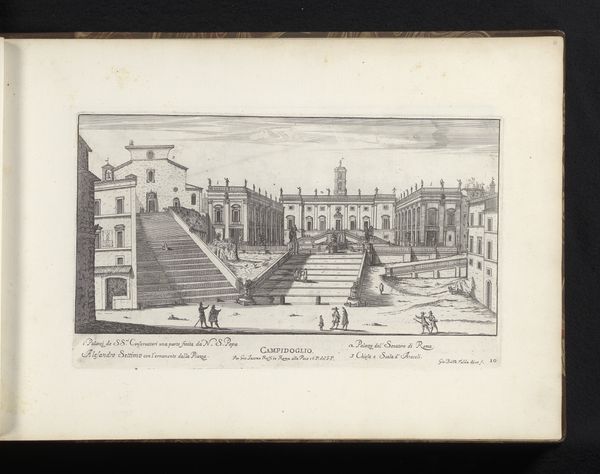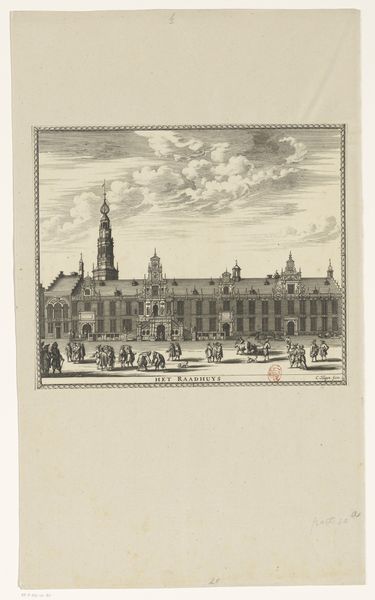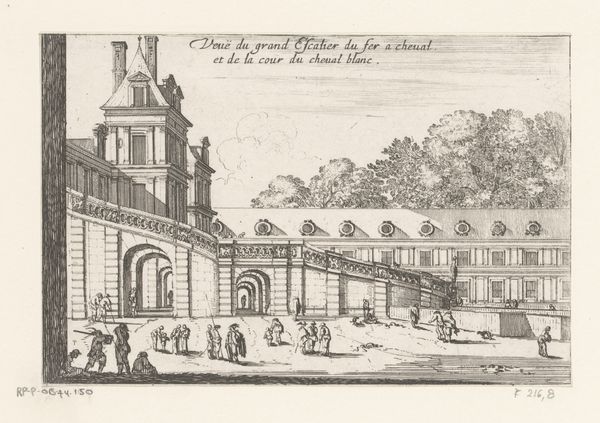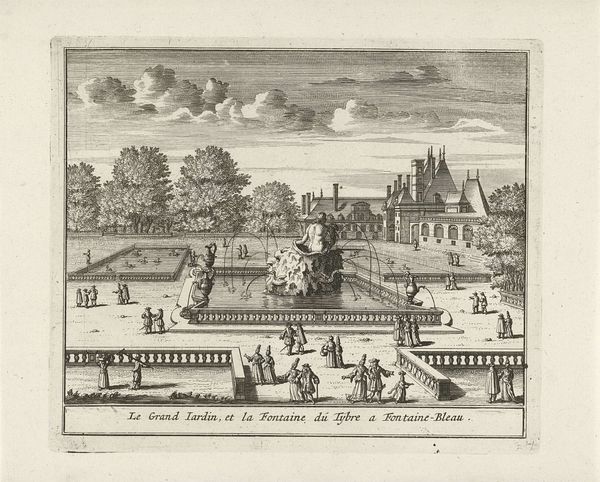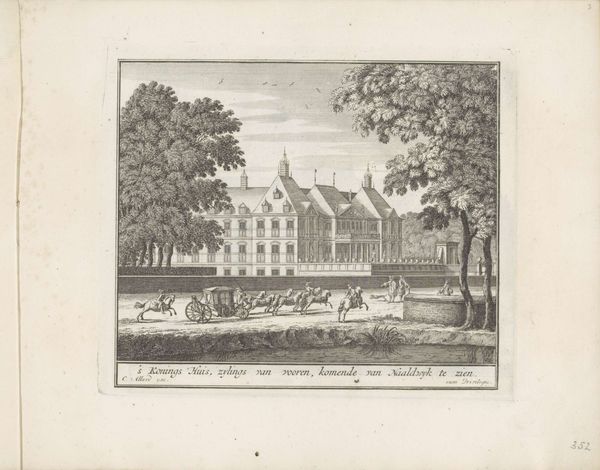
Gezicht op de Grande Chapelle en de Salle de Bal van het paleis van Fontainebleau 1726 - 1743
0:00
0:00
janlamsvelt
Rijksmuseum
print, engraving
#
baroque
# print
#
old engraving style
#
landscape
#
cityscape
#
engraving
Dimensions: height 177 mm, width 203 mm
Copyright: Rijks Museum: Open Domain
Curator: Let's discuss this engraving of Fontainebleau, made by Jan Lamsvelt between 1726 and 1743. It depicts "La Grande Chapelle et la Salle de Bal" or the Grand Chapel and Ballroom of the palace. It gives such an exacting view of the architecture, and its formal gardens! Editor: My first impression is the almost stark contrast between the severe architecture and these tiny, seemingly carefree figures populating the space. It feels like a stage set, the actors dwarfed by the backdrop. What purpose did prints like this serve back then? Curator: Exactly! These prints had multiple functions. Of course, as accurate depictions of important places, they had documentary value. However, they also played a key role in shaping and disseminating ideas about French power and architectural grandeur. Think of it as early architectural photography for the elite. The very act of representing a space implies an ideal vision of the monarchy. Editor: I'm thinking of who the artist served in crafting this "ideal vision." It’s propaganda, isn't it, cloaked in landscape? Lamsvelt would have had patrons, commissioning influences, not to mention the socio-political climate which would have all shaped his creative decisions and representation. Curator: Indeed. And in its style, the image is representative of Baroque landscape. Look at the structured formality—the way the landscape architecture reinforces the building's symmetry. Notice the linear perspective and the precision used to capture minute details on the Grande Chapelle. Lamsvelt shows off his technical ability. Editor: I can't help but also see the vast differences between the wealthy patrons who experienced this firsthand, compared with the people for whom the print served as a reminder of their station. It’s about emphasizing social stratification by carefully managing public space. Curator: Precisely. And disseminating that message widely! It shows how power is visually constructed and consumed, not just through direct experience but through representation as well. Editor: It gives one pause to consider who is remembered in this era. While the figures in the engraving stroll carefree through the space, people are still in their thrall, consciously and unconsciously influenced by the past’s shaping of modern day. Curator: An important thought. It illustrates that every artistic portrayal, even seeming objective ones, carries inherent ideologies worth scrutinizing.
Comments
No comments
Be the first to comment and join the conversation on the ultimate creative platform.
